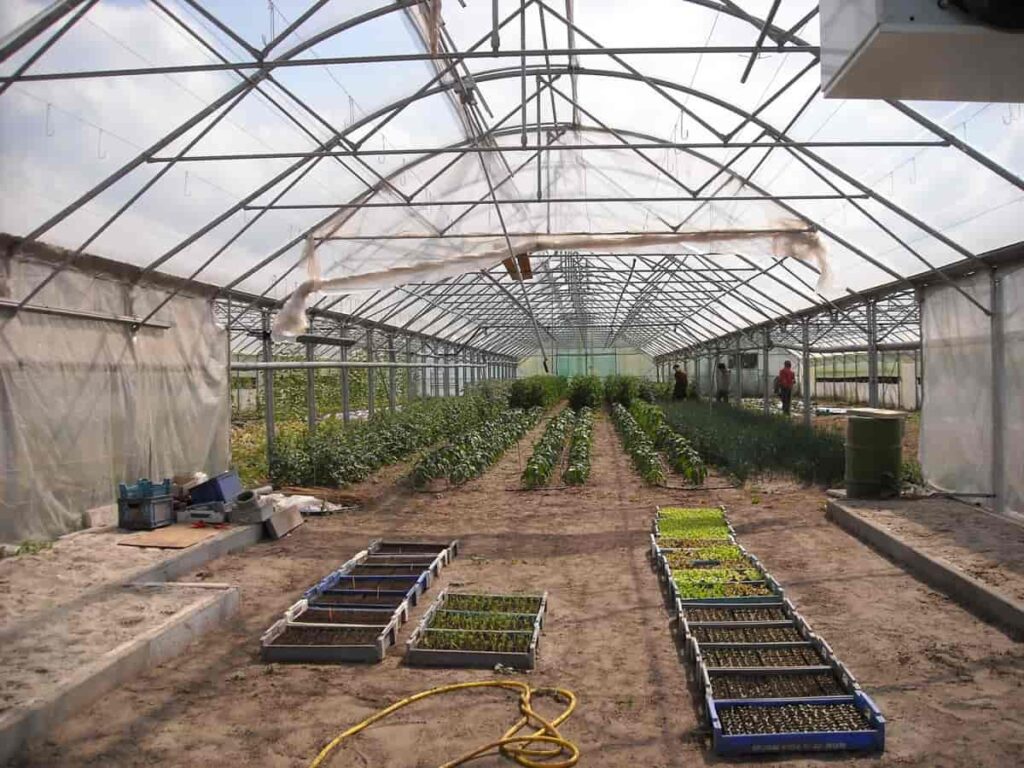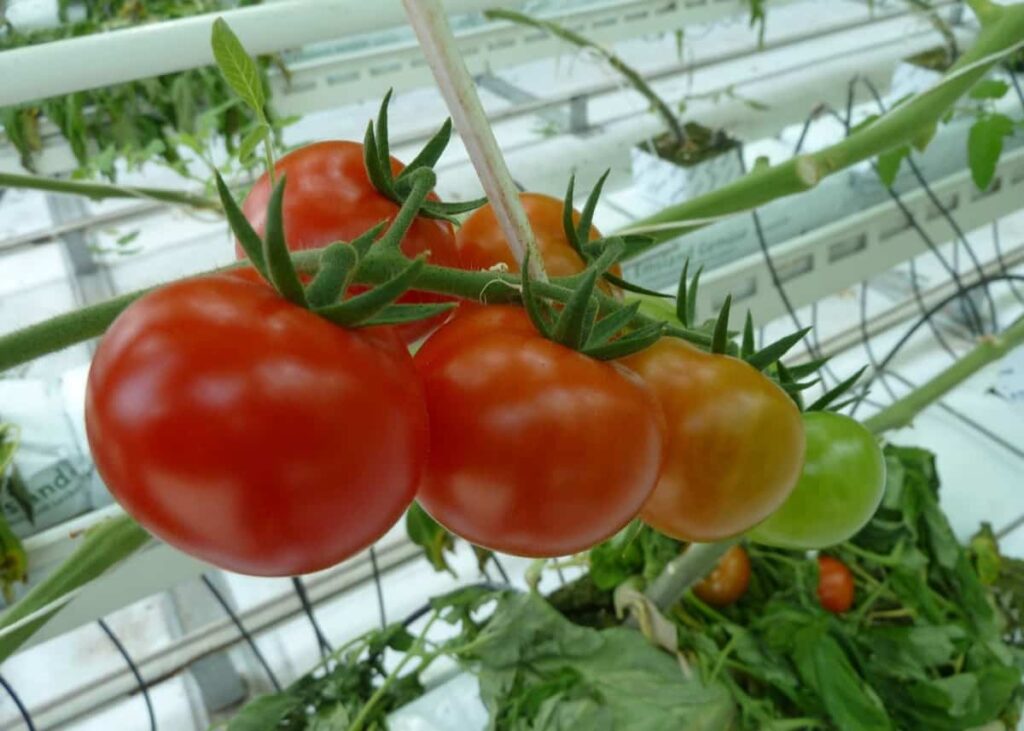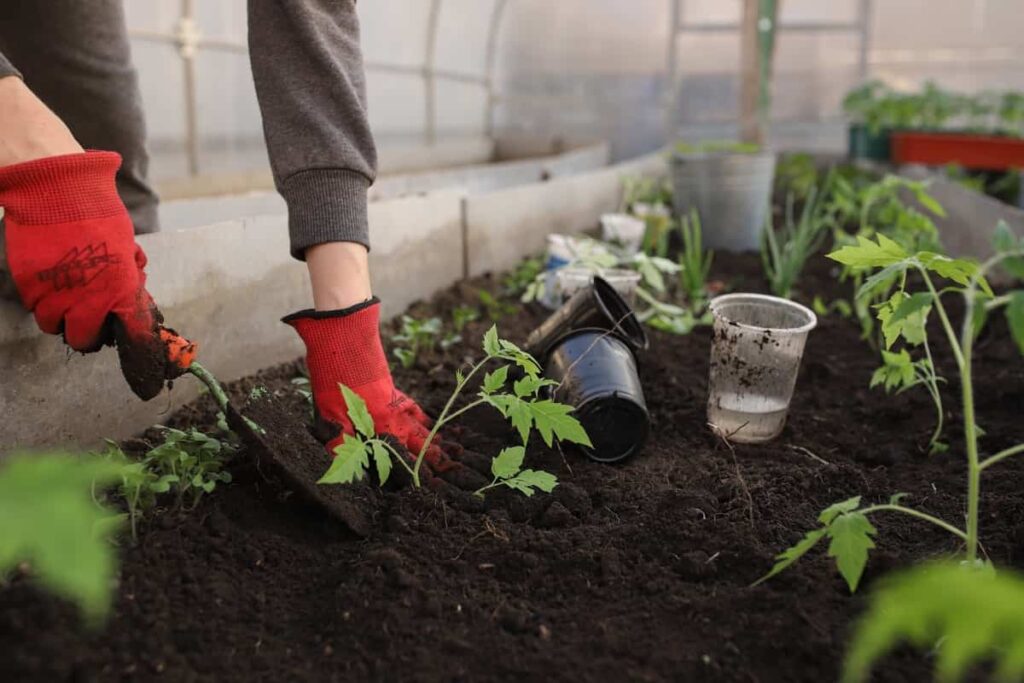Like most gardeners, you want your plants to grow as big and strong as possible. However, not every plant is suited for every climate. And unfortunately, not every climate is suited for every type of plant. Greenhouses are an environmentally friendly way to grow plants. When you use a greenhouse, the sun’s warmth is trapped inside the structure, providing year-round warmth for your plants.

Greenhouses also help protect your plants from wind and cold weather. Greenhouse gardening is essential to keep plants healthy and produce crops year-round. It uses artificial lights to simulate the natural sunlight that plants need. Greenhouse gardening is also a great way to grow unusual or difficult-to-find plants.
The benefits of greenhouse gardening include increased yields, better quality produce, and reduced reliance on outside resources. If you’re experiencing problems with your greenhouse garden, don’t panic. You can do a few simple steps to troubleshoot and get your plants back on track.
12 common greenhouse gardening problems and solutions
Choosing the wrong plants for greenhouse gardening
You should choose the plants that are adapted to your climate. The most common greenhouse problems are caused by growing the wrong plants inside. This can be due to choosing the wrong plant, not watering them properly, or not providing enough sunlight.
Solution – When choosing a plant for your greenhouse, consider the climate where you will keep it. Some plants are better suited to warm climates, while others work better in cooler climates. Also, check the plant’s water needs; some require regular watering, while others can tolerate slightly less attention.
Depletion of the soil’s nutrients
The most common greenhouse problems are caused by the depletion of the soil’s nutrients. When the soil is depleted of its nutrients, it cannot support plant growth. This can lead to problems such as wilting plants, poor pollination, and even fungal overgrowth.
Solution – To prevent these issues from occurring, it is essential to monitor the status of the soil and adjust your gardening strategies accordingly. One common problem associated with the depletion of soil nutrients is tilth loss. This occurs when the surface layer of soil begins to decompose and collapse due to a lack of essential nutrients. Tilth loss leads to shallow soils susceptible to erosion and other problems.
In case you missed it: How to Make a Greenhouse on Terrace: Mini/Small Greenhouse Ideas, and Tips

Poor soil quality can also lead to reduced crop yields due to decreased nutrient uptake and delayed flowering or fruiting. One way to prevent tilth loss is through proper watering habits. When watering plants, ensure adequate time for the water to seep into the ground before distributing it via irrigation systems or hoses. Another way to improve soil fertility is by using compost or mulch. These materials help retain moisture and provide beneficial microorganisms that help break down organic matter into usable nutrients for plants.
Watering too much or not enough
If the watering is insufficient, the plants will get dry and wilted. An excellent way to tell if you are watering your greenhouse too much or not enough is to look at the soil surface. If it is wet, you are over-watering; if it is dry, you are under-watering.
Solution – Remember a few things when watering your greenhouse: First, water enough so the plants have enough moisture but don’t over-water. Second, water slowly and deeply so the water circulates through the ground and into the plant roots. Water in the early morning or late afternoon when evaporation has stopped.
This will help conserve water when it’s most needed later in the day. Use a hose with a high-pressure nozzle that can reach into small spaces. This will help prevent water from spilling onto other greenhouse areas and causing damage. Avoid runoff by directing water away from building surfaces and toward gutters or downspouts.
Neglecting to control the temperature inside the greenhouse
Greenhouses can be a great way to grow plants, but they can also be problematic if the temperature is not controlled. Controlling the temperature is one of the essential factors in keeping plants healthy and thriving. Neglecting to control the temperature can lead to problems such as the growth of pests and fungi, inefficient use of energy, and loss of productivity.
One such problem is succumbing to frostbite. Without proper insulation, cold temperatures can cause damage to the plant’s leaves and roots, leading to stunted growth and even death. Additionally, high temperatures can also create damage and dangerous gases.
Solution – Properly controlling the temperature can ensure a healthy environment for your plants. Install an infrared thermometer to monitor the temperature inside your greenhouse. This will help you track the temperatures and ensure they are consistent throughout the day and week.
Ensure all doors and windows are closed during cold weather so that heat cannot escape. This will keep the temperature inside your greenhouse consistent. Use fans or air conditioners to regulate the temperate inside your greenhouse when necessary. However, be aware that overheating can cause problems, so be careful not to overdo it.
In case you missed it: Earning 24 Lakh from Greenhouse Farming – A Success Story

Not considering nearby trees
If your greenhouse is not adequately designed to consider the surrounding trees, it can create problems for your plants. One common problem is that greenhouses direct sunlight directly onto the plants, which can heat the soil and damage the roots. In addition, nearby trees can inhibit wind circulation and cause excess moisture retention in the soil. This can lead to fungal overgrowth, disease, and even plant death.
Solution -If you live in an area with many trees, it’s essential to consider their location when designing your greenhouse. Try to orient the structure so that it faces south or east so that sunlight can reach the plants on all sides.
Forgetting to provide shade where needed
Greenhouses are beautiful tools for growing plants, but they can also be problematic if the proper care is not taken. One common greenhouse problem is forgetting to provide shade where needed. This can lead to overheating and browning of the leaves. Another problem is water retention, which can cause mold and moisture problems.
Not providing enough shading can lead to several problems, including increased temperatures and decreased oxygen levels. Too much sunlight can also damage plants by promoting foliage growth but not flowering or fruit production. Additionally, the intensity of the sunlight can also cause plant diseases.
Solution – If your greenhouse is located in an area with strong sunlight throughout the day, consider installing awnings or roof overhangs to help shade the area during the morning and afternoon hours.
Not controlling the humidity
The humidity in a greenhouse is one of the most important factors for successful growth. Too high or low humidity can cause problems such as stunted growth, leaf curl, and fungal overgrowth.
In case you missed it: Top 20 Flowers To Grow In A Greenhouse

Solution – The ideal humidity for a greenhouse is around 50%. However, many growers find that their greenhouses are not always controlled at this level.
- Moisture leakage – One of the main reasons humidity is not controlled in a greenhouse is because moisture leaks through the walls and roof. This can be due to gaps in the construction, weak materials, or improper installation.
- High relative humidity levels – When the air inside a greenhouse is saturated with water vapor (75% RH), it will hold onto moisture rather than release it. This can occur when there is little ventilation, the building retains water vapor, or plants transpire water vapor.
- Low ambient humidity levels – Outside conditions contribute to inadequate greenhouse humidity. If it’s very dry outside, the air inside will have less water vapor to hold onto, leading to lower relative humidity inside the greenhouse.
Failing to ventilate
Failing to ventilate can cause several common greenhouse problems, including excessive moisture accumulation, microbial growth, and plant disease. It’s essential to understand how ventilation works and what factors influence it.
Solution – The primary purpose of ventilation in greenhouses is to allow fresh air into the structure and to exhaust stale air. The rate at which air moves through a greenhouse is called its ventilation rate. To maintain a healthy environment, it is essential to ensure that your greenhouse is well-ventilated. Failing to do so can lead to moisture accumulation, microbial growth, and plant disease.
Ensure all doors and windows are open during warm weather so fresh air can enter the greenhouse and stale air can escape. Close all doors and windows during cold weather to keep the inside temperature consistent. Install an exhaust fan or ceiling fan near the greenhouse’s roof to help move warm air out of the structure and cool air in. Ensure the fan is installed correctly according to manufacturer guidelines so that it doesn’t disturb your plants or damage equipment inside the greenhouse.
In case you missed it: Top 30 Vegetables To Grow In A Greenhouse

Light requirements for greenhouse gardening
One common greenhouse problem is limiting light. You can limit light in your greenhouse, which will help keep plants healthy and productive.
Solution – First, ensure the glass in your greenhouse is adequately sealed. Drafts of wind and air can be very destructive to plants, and open gaps in the glass allow these drafts inside.
Also, don’t let bright sunlight shine directly on plants during the day.
Instead, position them so they receive indirect light from a window. This will help them conserve energy and stay healthier. And finally, keep an eye on the temperature inside your greenhouse. High temperatures encourage lush growth in plants, while low temperatures stunt their growth and can even kill them.
Choosing the wrong fertilizers and pesticides
Solution – The wrong type of fertilizer or pesticide can cause common greenhouse problems such as algae growth, poor plant health, and stunted plants. Pesticides should only be used when necessary and should only be used on plants that are pests. Overuse of pesticides can also damage the environment and your health.
Common greenhouse pests and diseases
You can use natural predators such as ladybugs or birds to control aphids, barriers (such as floating row covers) to keep insects away from crops, and spray pesticides sparingly when necessary. Cold weather can also be a problem in greenhouses. In cold climates, plants slow down growth and become more susceptible to pests and diseases. Cover plants with potting soil or plastic wrap in cold weather to help keep them warm and protect them from pests.
In case you missed it: Greenhouse Gardening Frequently Asked Questions

Greenhouse diseases are common in gardens, and while they can be easily prevented with proper sanitation and upkeep, they can still cause major damage if not caught in time. Many diseases can be effectively treated with various fungicides and other agricultural products, but you should always check them before being treated.
Other problems
If you have some greenhouse problems, you may need to encourage fungus. Fungi help break down organic matter, which helps keep your plants healthy. Fungi can also fix nitrogen in the air, making it available to plants. Fungi offer many plant benefits, including improved soil quality, reduced water requirements, and increased nutrient uptake.
Solution – Fungi love organic matter, so adding compost, aged manure, or shredded leaves to your garden can help promote their growth. However, try not to add too much; you want enough plant food for your plants but not too much that it becomes a mess. The ideal temperature for fungi growth is between 13 to 24°C. If the temperature is too cold or too hot, fungi will not grow as well, and you may experience problems with pest control.
Conclusion
Greenhouse gardening can be a fun and rewarding experience, but it’s not without its challenges. If you’re like most gardeners, you’ve probably encountered at least a few common problems when it comes to gardening in the greenhouse. This article will help you identify and solve some of the most common greenhouse gardening issues. With this knowledge, you’ll be able to get your plants growing healthy and happily in no time.
- How to Grow Tomatoes Organically at Home: A Comprehensive Guide
- Organic Gardening on a Budget: Low-Cost Methods and Materials
- Gongura Seed Germination and Planting Methods
- Cabbage Seed Germination and Selection
- Broccoli Seed Germination and Selection
- Asparagus Seed Germination and Variety Selection
- Seasonal Flower Gardening: Best Practices for Spring, Summer, Fall, and Winter
- How to Grow Hibiscus from Flower
- Plantation Ideas for Home Decoration: A Beginners Guide
- Flower Garden Designs and Layouts for Beginners
- Planting and Spacing Techniques in Papaya: A Beginner’s Guide
- Growing Gold: Essential Techniques for Planting Pineapples
- How to Make Kalanchoe Plant Bushy: Home Remedies and Solutions
- 11 Reasons Why Your Gardenia is Not Blooming: Home Remedies and Solutions
- Eco Elegance: The Guide to Designing a Drought-Tolerant Landscape
- Gardening on a Slope: Strategies for Hillside Landscaping
- Nourish and Flourish: Top Organic Mulches for Thriving House Plants
- Everything You Want to Know about Indian Mogra Flower: Discover Uses and Growing
- Green Thumb Success: Expert Tips for Cultivating Greenhouse Pumpkins All Year Round
- Maximize Growth & Flavor: The Ultimate Guide to Companion Planting in Herb Gardens
- How to Control Rhododendron Problems Naturally: Home Remedies and Organic Ways to Fix Them
- Natural Magic: The Remarkable Benefits of Cinnamon for Plants
- Best Steps to Revive Dying Tulip with Natural and Organic Treatment
- 10 Reasons Why Your Angel Trumpet is Not Blooming: Remedies and Treatment
- How to Fix Periwinkle Leaf and Flower-Related Problems: Natural Remedies and Solutions
- How to Fix Zinnias Leaf and Flower Problems: Discover Natural and Home Remedies
- Organic Steps to Induce Lemon Tree Flowers: A Comprehensive Guide
- Bloom Booster: Crafting the Perfect Homemade Bougainvillea Fertilizer
- Optimizing Growth: A Guide to Applying NPK Fertilizer for Potted Plants
- 10 Best Homemade Fertilizers for Rubber Plant: DIY Recipes and Application Method
- How to Boost Female Pumpkin Flowers: Effective Steps for More Flowers and High Yields
- Transform Your Indoor Garden: Top Benefits of Pink Salt for Houseplants
- 10 Best Homemade Fertilizers for Peacock Plants (Calathea): Easy DIY Guide
- Unlock Blooms: 9 Reasons Why Your Potted Chrysanthemum is Not Blooming
- 8 Reasons Why Your Potted Hibiscus is Not Blooming: Fix it with Simple Solutions
- Unlock Blooms: 9 Key Reasons Your Potted Frangipani Won’t Flower